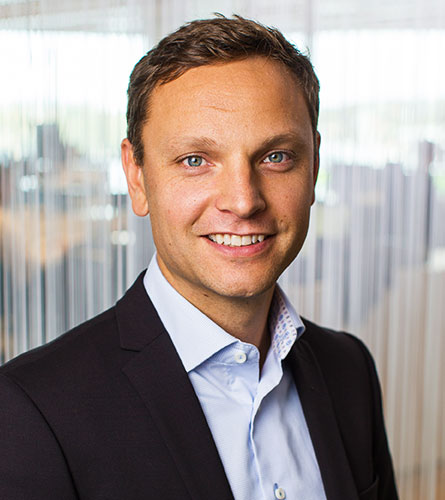At the NDSML Summit 2021, we had the opportunity to learn how Telenor Connexion have developed an automated and self-tuning machine learning solution to find customer and network issues using real-time data from half a billion daily events. We also got an insight into how these anomalies are fed to a Human-in-the-loop alarm management system with powerful Analytics to qualify which cases need actions. Anders Bresell, Head of Data at Telenor Connexion, brought us closer to their Automated Machine Learning for Incident detection in global IoT communication. Some of the key points attendees could take away from Anders’s talk were that ML as a Service would cut your time-to-production and lower Maintenance, the importance of integrating the ML output into your business processes and the fact that unless you make it easy to act on ML findings, it doesn’t matter how good/bad your models are.
Fascinated and intrigued, we invited Anders to tell us a bit more about their automated and self-tuning machine learning solution, how they’ve designed their ML solution so it’s scalable and elevates the business, and of course, other ML applications in the telecom industry.
Hyperight: Hi Anders, welcome back to the NDSML Summit, we are always pleased to have you. Although our audience is already well familiar with you, could you please tell us a bit more about yourself and what you have been up to since the last time we met on stage?


Anders Bresell: Thank you, It is a pleasure to be back. I am Head of Data at Telenor Connexion. This is a new title but more or less the same team. It merely indicates an articulated focus of our company and an even stronger mandate to drive the data agenda. What we have done since last time is a major improvement in online anomaly detection.
We deployed a whole new real-time Machine Learning solution that very effectively elevates our Service Operation Center. We also modernised our Big data platform. But interestingly, we also saved a number of million SEK in various traditional Analytics tasks. So yeah, we’ve been busy.
Hyperight: At the NDSML Summit 2021, you presented an automated and self-tuning machine learning solution for Incident detection in global IoT communication. Please tell us a bit more about the solution. What was the process of developing it and what are the outcomes?
Anders Bresell: So we are all into AWS, and after some piloting of various ML models and cloud services, we found one that allowed our team to very rapidly take our models into production with minimum or no operational load for the team in terms of maintaining it. It has been a great success, and the step-change of model accuracy has resulted in detecting cases we previously couldn’t. However, I want to stress that success shouldn’t be measured in model accuracy. What we saw with the new solution is that the adoption rate by our users has increased tremendously, and that is something that really matters and catered for the success.


Hyperight: Some of the key points in your sessions were the importance of integrating the ML output into your business processes and making it easy to act on ML findings. Do you think this is where organisations usually fail? And what other challenges do you see in implementing machine learning?
Anders Bresell: I always argued that taking your models to production is hard, and in this year’s talk, I revisit this and suggest a few approaches to tackle it, even for small teams. However, as you point out – what I recently concluded based on the many years of experience in production-grade machine learning is that – the design of your solution must be carefully considered in order to effectively elevate your business process. A really precise output score has little effect if it is hard to act on. User experience and business process integration are really key to get scale-out effects of your AI and ML initiatives – going to production is not enough.
Hyperight: Except for Incident detection in global IoT communication, what are some other significant ML applications in the telecom industry?
Anders Bresell: There is, of course, the Customer Churn and up-sell cases. However, driving competitiveness by finding revenue leakage, mall-configured setups and price simulations are all very important areas. Fraud towards us, but even more importantly, models that can detect and prevent frauds towards our customers will become even more important going forward in the age of Digital.


Hyperight: And lastly, what ML trends can we expect in the near future?
Anders Bresell: Well, I foresee even more focus on automation. This will slightly change the focus for the Data Science field. It will drive and guide us in terms of what our models need to support and address. It is not about just solving a problem that humans have a hard time doing — it is to get large scale effects. This means that system engineering and enterprise architecture will become centrepieces in ML and AI going forward because these are the key aspects to get right. I actually think the time when ML model accuracy was the main challenge is no longer that valid.














Add comment